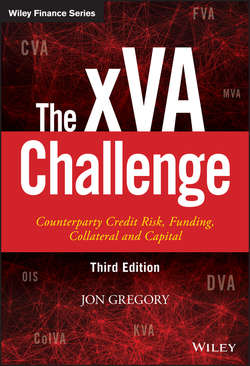Читать книгу The xVA Challenge - Gregory Jon - Страница 12
На сайте Литреса книга снята с продажи.
2
The Global Financial Crisis
2.4 Backlash and criticisms
ОглавлениеThe above regulatory changes are not without controversy and criticism. Of course there is the obvious complaint that banks will suffer much higher costs in transacting OTC derivatives. This will make them less profitable and higher costs will ultimately also be passed on to end-users. For example an airline predicted more volatile earnings “not because of unpredictable passenger numbers, interest rates or jet fuel prices,” but rather due to the OTC derivatives it used.4 End-users of derivatives, although not responsible, were now being hit as badly as the orchestrators of the global financial crisis. A negative impact on the economy in general was almost inevitable.
However, more subtle were the potential unintended consequences of increased regulation on counterparty risk. The regulatory focus on CVA seemed to encourage active hedging of counterparty risk so as to obtain capital relief. However, the CDS transactions that were most important for such hedging (single-name and index OTC instruments) introduced their own form of counterparty risk, which was the wrong-way type highlighted by the monoline failures. Indeed, the CDS market is even more concentrated than the overall OTC market and has become less, rather than more, liquid in recent years. Problems could be seen as early as 2010 when, for example, the Bank of England commented that:5
… given the relative illiquidity of sovereign CDS markets a sharp increase in demand from active investors can bid up the cost of sovereign CDS protection. CVA desks have come to account for a large proportion of trading in the sovereign CDS market and so their hedging activity has reportedly been a factor pushing prices away from levels solely reflecting the underlying probability of sovereign default.
Since it was the new CVA capital charge that was partially driving the buying of CDS protection that in turn was apparently artificially inflating CDS prices, there was a question over the methodology (if not the amount) for the additional capital charges for counterparty risk. This led to the controversial European exemptions for CVA capital, discussed later in Chapter 8.
Questions were also raised about the central clearing of large amounts of OTC derivatives and what would happen if such a CCP failed. Since CCPs were likely to take over from the likes of Lehman, Citigroup and AIG as the hubs of the complex financial network, such a question was clearly key, and yet not particularly extensively discussed. Furthermore, the increased collateral requirements from CCPs and the bilateral collateral rules were questioned as potentially creating significant funding costs and liquidity risks. In particular, the fact that initial margin (overcollateralisation) was to become much more common was a concern.
Perhaps the most vociferous criticism was for the DVA component under IFRS 13 accounting standards. DVA required banks to account for their own default in the value of transactions and therefore acted to counteract CVA losses. However, many commentators believed this to be nothing more than an accounting trick as banks reported profits from DVA simply due to the fact that their own credit spread implied they were more likely to default in the future. Some banks aimed to monetise their DVA by selling protection on their peers, a sure way to increase, not reduce, systemic risk. Basel III capital rules moved to remove DVA benefits to avoid effects such as “an increase in a bank’s capital when its own creditworthiness deteriorates.” Banks then had to reconcile a world where their accounting standards said DVA was real but their regulatory capital rules said it was not.
4
“Corporates fear CVA charge will make hedging too expensive”, Risk, October 2011.
5
See www.bankofengland.co.uk/publications/Documents/quarterlybulletin/qb1002.pdf.
